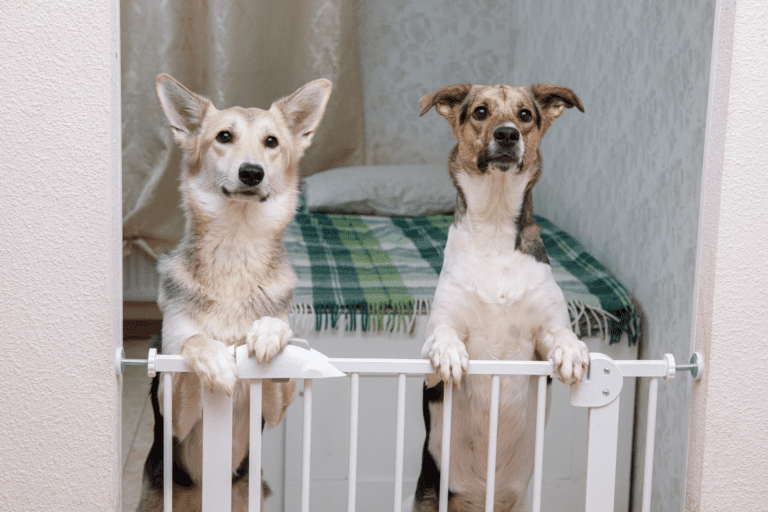What Is Dog Crate Training?
When done correctly, crate training offers numerous benefits for both dogs and their owners. However, whether or not to crate train is a personal decision and depends on your circumstances, your dog’s needs, and your training goals. Below are some pros and cons of crate training to help you decide:
Benefits of Crate Training:
- Safety: A crate can keep your puppy or dog safe when you can’t supervise them, preventing them from getting into potentially harmful situations or ingesting dangerous objects.
- House Training: Dogs naturally avoid soiling their sleeping areas, so crate training can be practical for housebreaking a puppy.
- Travel: A crate-trained dog will be more comfortable and safer when traveling, whether on short trips to the vet or longer journeys.
- Personal Space: Dogs are den animals by nature, and a crate can provide a sense of security and a personal space for them to retreat to.
- Recovery: If your dog ever needs to be confined for medical reasons or surgery recovery, being accustomed to a crate can make the experience less stressful.
- Management: This can help manage behavioral problems by preventing unwanted behaviors when unsupervised.
Potential Drawbacks or Concerns:
- Overuse: Dogs shouldn’t be left in crates for extended periods. Regularly crating a dog for long durations can lead to physical and psychological issues.
- Negative Associations: If used as a punishment, the dog can develop a fear or hatred of the crate.
- Physical Limitations: Growing puppies or older dogs with arthritis might find prolonged confinement uncomfortable.
- Lack of Socialization and Exercise: Over-reliance on the crate can deprive the dog of necessary social interactions and physical activity.
- Possible Anxiety: Some dogs, particularly those with separation anxiety, might become more stressed when crated.
Tips for Effective Crate Training:
- Positive Association: Make the crate a positive place. Never use it as punishment. Start by feeding meals in the crate or providing treats and toys.
- Gradual Introduction: Allow your dog to get used to the crate over time. Start with short durations and gradually increase as your dog becomes comfortable.
- Proper Size: Ensure the crate is big enough for your dog to stand, turn around, and lie down comfortably, but not so big that they can soil one end and sleep on the other.
- Location: Place the crate in a central location where your dog can still see and hear the family so they don’t feel isolated.
- Consistent Rules: If you’re using the crate as part of house training, be consistent about taking your dog out to potty as soon as they’re released from the crate.
In conclusion, when appropriately used, crate training can benefit dogs and owners alike. However, it’s essential to ensure the crate is used in a humane and positive way that meets the dog’s needs and doesn’t cause undue stress or harm. If unsure about crate training or if your dog shows signs of distress, consulting with a professional dog trainer or behaviorist might be helpful.
Learn about furniture style dog crates HERE.







